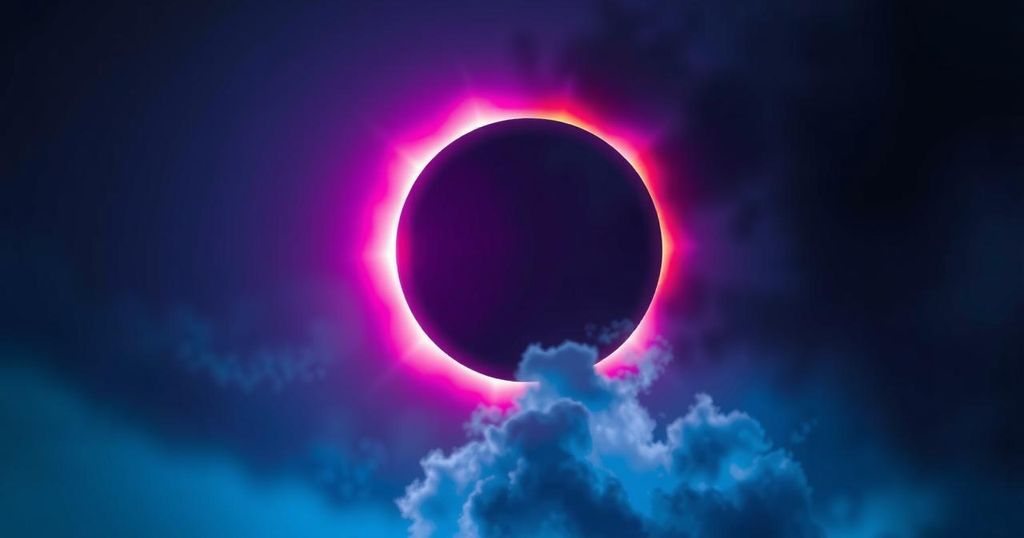A partial solar eclipse will occur today, visible from eastern Canada to Siberia. The event, lasting approximately four hours, begins at 8:50 AM UTC. While viewers in France will see 10-30% obscurity of the sun, proper eye protection is crucial. This is the first solar eclipse of the year and follows a recent lunar eclipse.
Today, a partial solar eclipse is set to occur, with the sun partially obscured by the moon. This eclipse will be visible across various regions of the northern hemisphere, extending from eastern Canada to Siberia. As the 17th solar eclipse of the 21st century and the first of the year, it is anticipated to last approximately four hours, starting at 8:50 AM UTC and concluding around 12:43 PM UTC.
According to Florent Deleflie of the Paris-PSL Observatory, residents of Mauritania and Morocco will be the first to view the eclipse, while those in northern Siberia will be the last. The partial eclipse will also be observable across parts of Europe, peaking at 10:47 AM UTC over northeastern Canada and Greenland, where up to 90% of the sun’s disk will be covered.
A solar eclipse typically happens when the sun, moon, and Earth align, but this particular eclipse will not result in a total eclipse, as the alignment does not allow the moon’s shadow cone to make contact with the Earth’s surface. “The alignment was not perfect enough for the shadow cone to touch the Earth’s surface,” explained Deleflie.
In France, viewers can expect to see the eclipse between 10:00 AM and 12:00 PM UTC, with varying percentages of the sun being obscured, ranging from 10% to 30%. Although the change may not be significant to the naked eye, celestial enthusiasts should take precautions to protect their vision. Astronomers advise using proper eclipse glasses, as ordinary sunglasses are insufficient and any defect in the glasses can lead to serious eye injuries.
This partial solar eclipse follows a total lunar eclipse that occurred two weeks prior, which had caused the moon to appear red. It is common for such events to occur in close succession, according to Deleflie. The last partial solar eclipse visible in mainland France was on October 25, 2022. The next significant event will be a total solar eclipse on August 12, 2026, which will obscure 92% of the sun’s disk in Paris and 96% in Marseille, although it will not directly cross France.
In summary, the partial solar eclipse today represents a unique astronomical event, with visibility across specific northern hemisphere regions. Safety precautions are imperative for viewing the eclipse, as proper protective eyewear is necessary to prevent eye damage. While a total eclipse will not occur this time, future solar eclipses, including one in 2026, promise even more spectacular displays. Such celestial events continue to captivate and inspire awe across the globe.
Original Source: www.jordannews.jo






